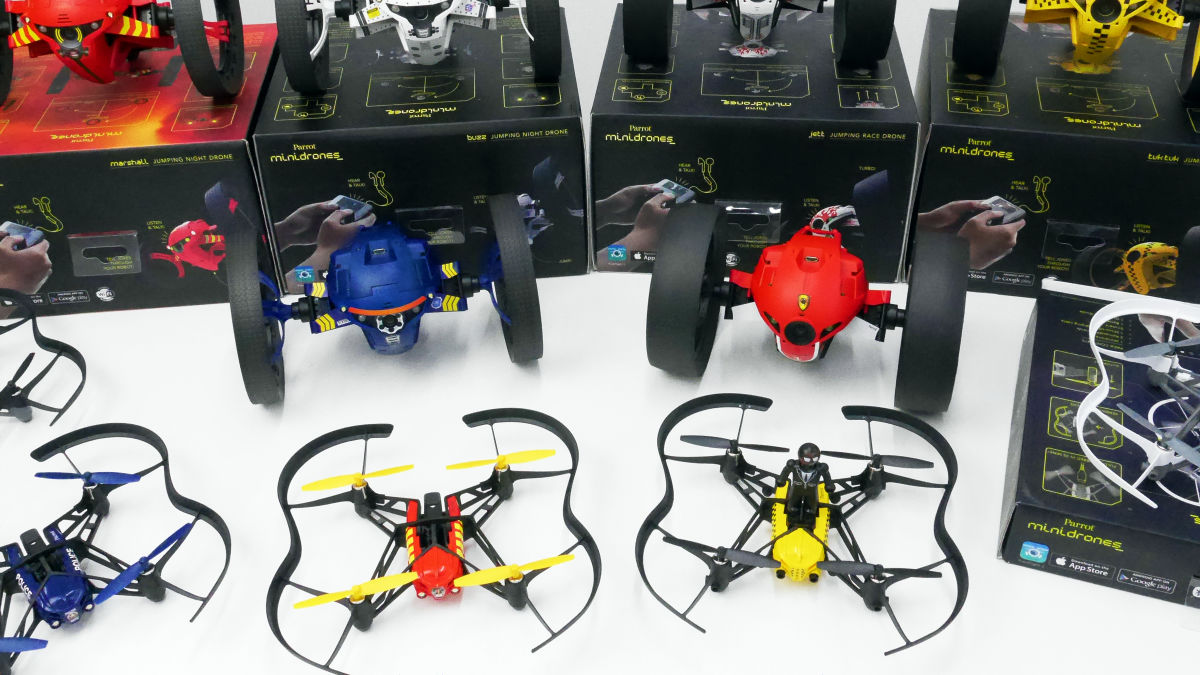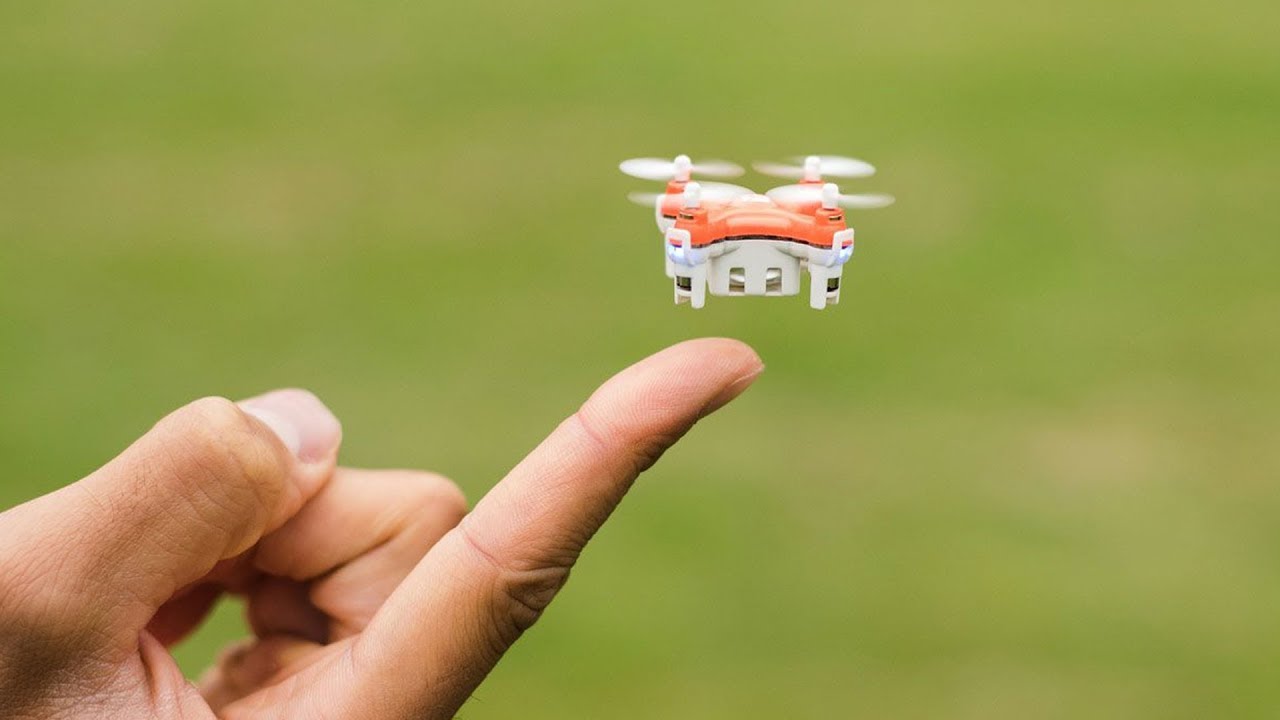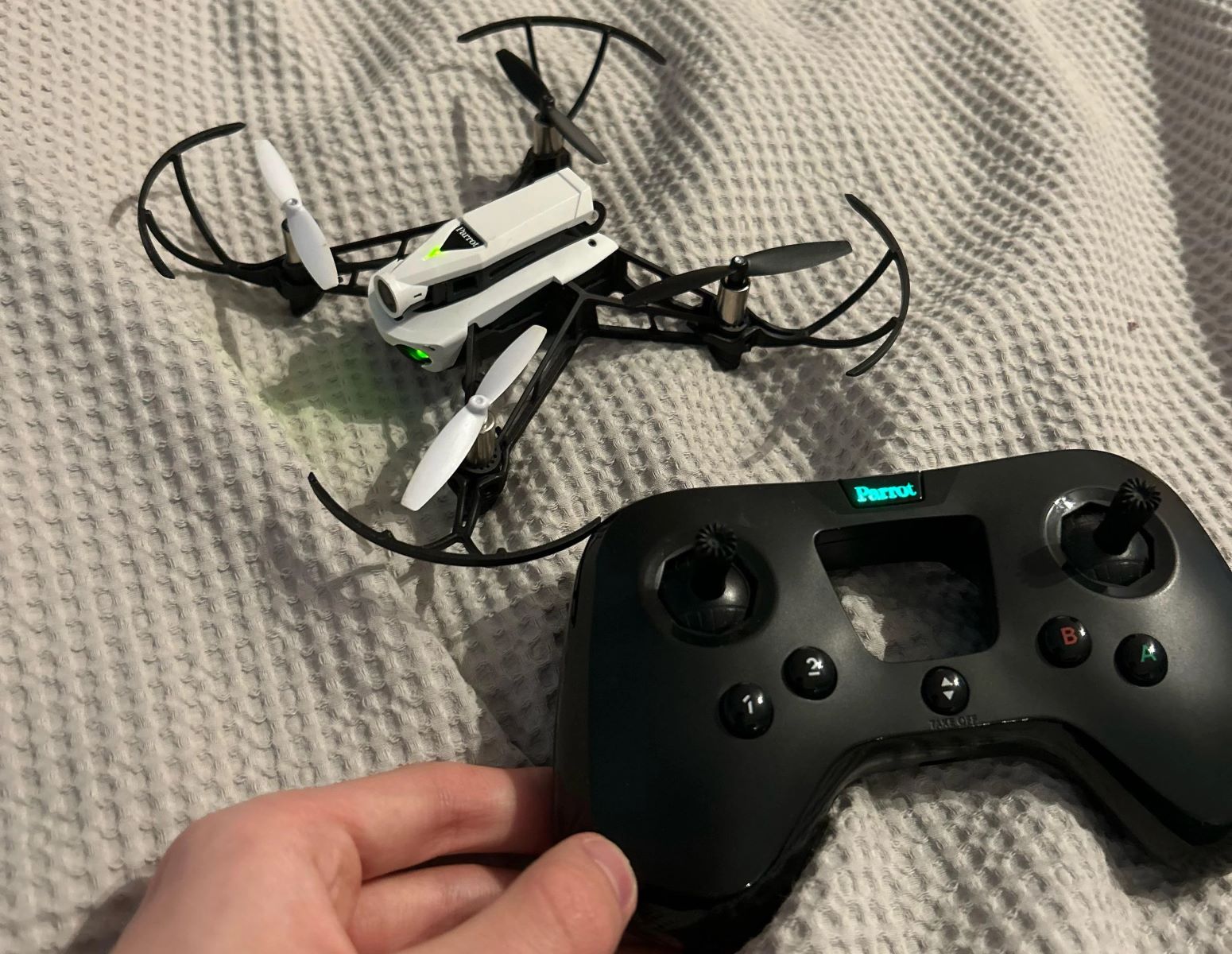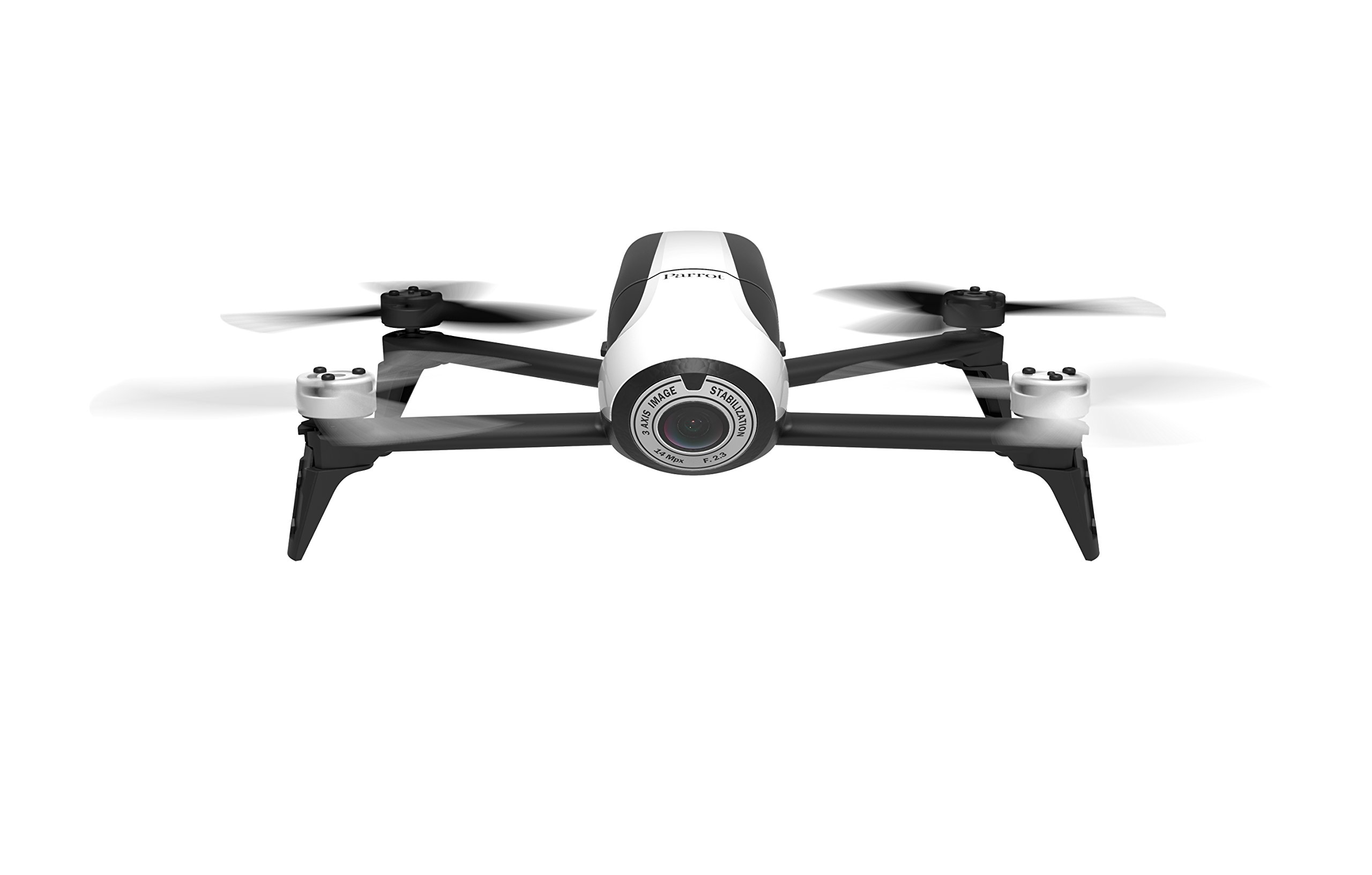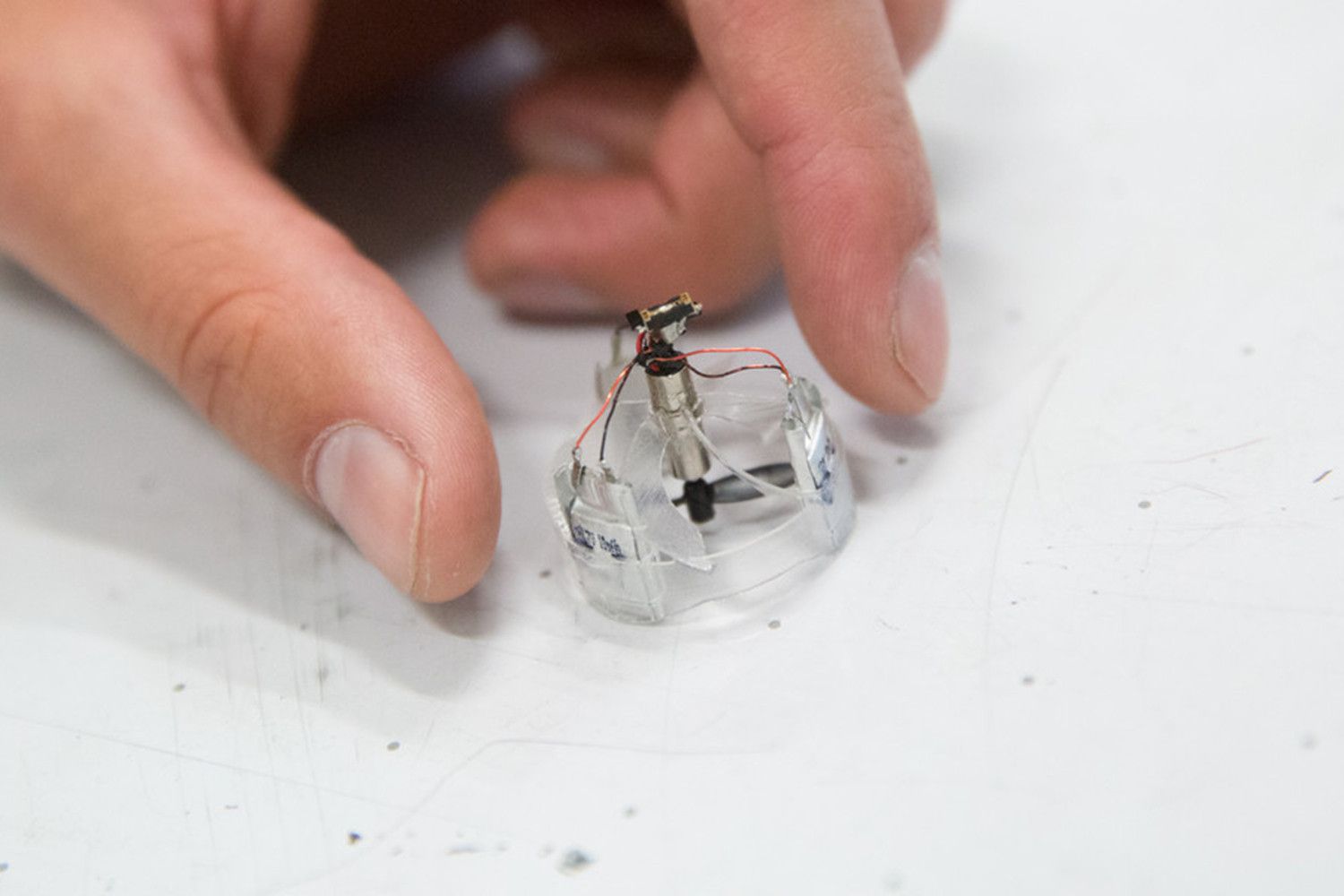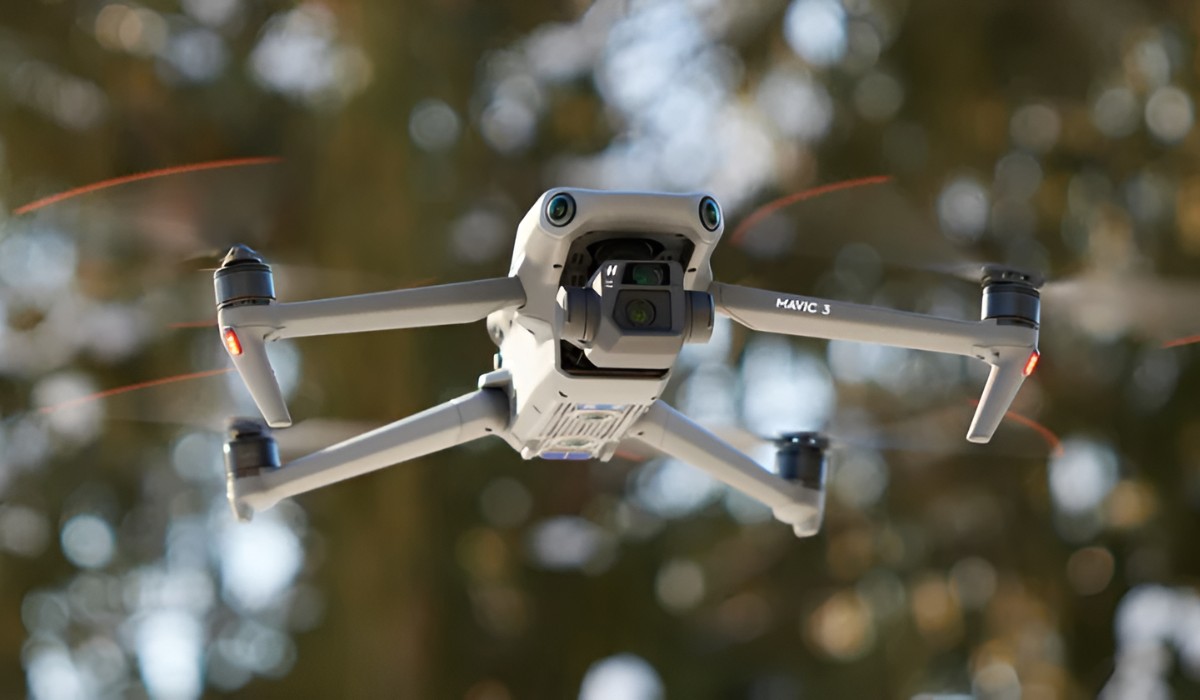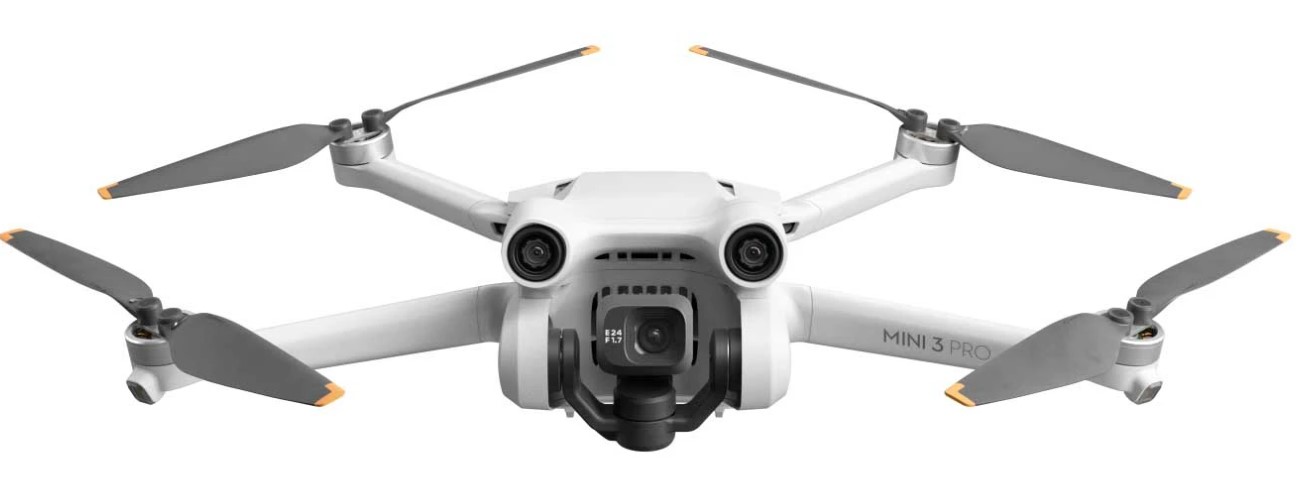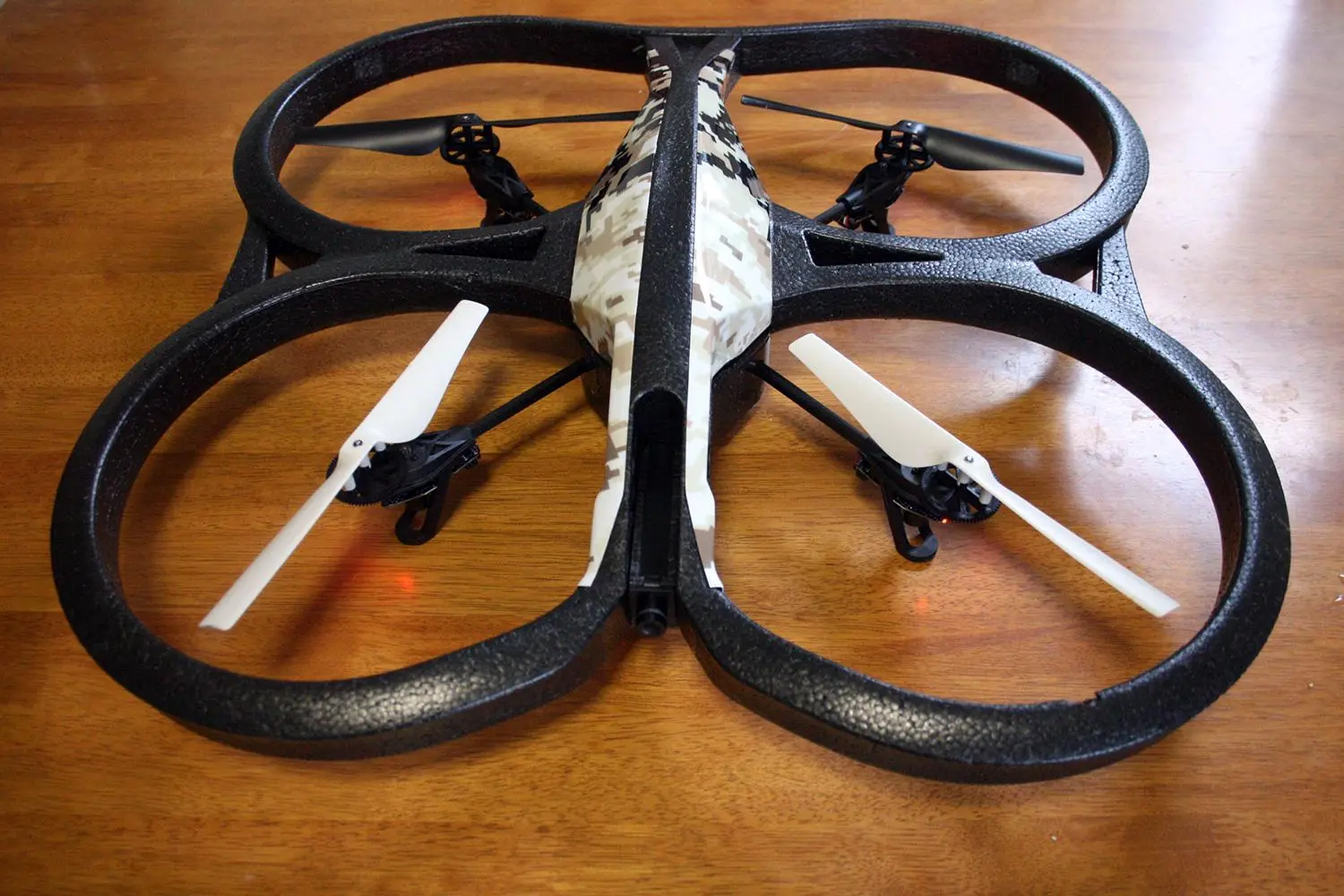Introduction
Welcome to the exciting world of Parrot Mini Drones! These compact and nimble drones are perfect for beginners and hobbyists looking to explore the world of aerial photography and drone flying. With their user-friendly controls and impressive capabilities, Parrot Mini Drones offer a thrilling experience for pilots of all skill levels.
If you’ve just acquired a Parrot Mini Drone or are considering getting one, this guide is here to help you get started and make the most of your drone flying adventures. From the initial setup to mastering the basic controls and performing advanced maneuvers, we’ll cover everything you need to know to take to the skies with confidence.
Before we dive into the specifics, it’s important to note that safety should always be a top priority when flying a drone. Make sure to familiarize yourself with the local regulations and fly responsibly in designated areas. It’s also recommended to start practicing in an open and unobstructed space until you feel comfortable maneuvering the drone.
In the following sections, we’ll walk you through the key steps and provide valuable tips for flying your Parrot Mini Drone. So let’s buckle up, power up those propellers, and embark on an exhilarating drone flying adventure!
Getting Started
Before you start flying your Parrot Mini Drone, there are a few essential steps you need to take to ensure a successful flight. Let’s dive into the getting started process:
- Read the User Manual: It’s important to familiarize yourself with the drone’s features, controls, and safety guidelines. Take the time to read the user manual that comes with your Parrot Mini Drone. This will provide you with valuable information on how to operate the drone safely and effectively.
- Check the Drone Components: Before taking flight, thoroughly inspect your drone to ensure all components are in good condition. Check for any loose or damaged parts, and if necessary, make the appropriate repairs or replacements. It’s better to address any issues before taking off.
- Charge the Drone: Ensure that your Parrot Mini Drone is fully charged before heading out for a flight. Connect the drone’s battery to the charger and let it charge completely. This will ensure you have enough power for a successful flight and prevent any unexpected battery drain during flight.
- Prepare Your Smartphone: Most Parrot Mini Drones can be controlled through a dedicated smartphone app. Make sure your smartphone is compatible with the drone’s app and that it is up to date. Download and install the Parrot Mini Drone app from the respective app store for your device.
- Familiarize Yourself with the Controls: Take a moment to familiarize yourself with the controls of your Parrot Mini Drone. Understanding how each control affects the drone’s movement will help you navigate the skies with ease. Spend some time practicing the controls before taking your first flight.
By following these initial steps, you’ll set yourself up for a smooth and enjoyable flying experience with your Parrot Mini Drone. Now that you’ve got everything set up and ready to go, it’s time to dive into the thrilling world of drone flying!
Charging the Drone
Before taking your Parrot Mini Drone on its maiden flight, it’s crucial to ensure that it is properly charged. Here’s a step-by-step guide on how to charge your drone:
- Locate the USB Charging Cable: Your Parrot Mini Drone should come with a USB charging cable. Locate this cable, as you will need it to charge the drone’s battery.
- Connect the Charging Cable: Plug one end of the USB charging cable into the drone’s charging port. The charging port is usually located on the side or at the bottom of the drone. Make sure the cable is securely inserted into the port.
- Connect the Other End of the Cable: Plug the other end of the USB charging cable into a power source. This can be a USB wall charger, a computer, or any other device with a USB port. Ensure that the power source is turned on and functional.
- Monitor the Charging Process: Once the drone is connected to the power source, the LED indicator lights on the drone’s battery will illuminate, indicating that the charging process has started. Keep an eye on the lights to monitor the progress of the charge. Typically, the lights will turn off or change color once the battery is fully charged.
- Allow Sufficient Charging Time: Depending on the drone model and the remaining battery charge, it may take between 30 minutes to a few hours to fully charge the drone. It’s important to let the battery charge completely before disconnecting it from the power source.
- Disconnect the Charging Cable: Once the battery is fully charged, unplug the USB charging cable from the drone’s charging port and the power source.
It’s important to note that overcharging the drone’s battery can have negative consequences, so be sure to disconnect the charging cable once the battery is fully charged. Following these steps will ensure that your Parrot Mini Drone is ready to take flight with a fully charged battery.
Installing the Parrot Mini Drone App
In order to control your Parrot Mini Drone, you will need to install the dedicated Parrot Mini Drone app on your smartphone. Here’s a simple guide on how to install the app:
- Check Compatibility: Before proceeding, ensure that your smartphone is compatible with the Parrot Mini Drone app. The app is available for both iOS and Android devices. Check the app store on your smartphone to see if the Parrot Mini Drone app is compatible with your device.
- Open the App Store: On your smartphone, open the app store (Apple App Store for iOS devices or Google Play Store for Android devices).
- Search for the Parrot Mini Drone App: In the app store, use the search function and enter “Parrot Mini Drone” in the search bar. Look for the official Parrot Mini Drone app developed by Parrot SA.
- Select and Install the App: Once you find the official Parrot Mini Drone app, tap on it to access the app’s page. Review the app’s description and check the ratings and reviews. If everything looks good, click on the “Install” or “Get” button to initiate the installation process.
- Wait for the Installation: Depending on your internet connection speed, the app installation may take a few moments. Ensure that you have a stable internet connection and wait until the installation process is complete.
- Open the App: Once the installation is complete, you can find the Parrot Mini Drone app on your smartphone’s home screen or app drawer. Tap on the app icon to open it.
With the Parrot Mini Drone app successfully installed on your smartphone, you are now one step closer to controlling your drone with ease. Make sure to familiarize yourself with the app’s features and settings to make the most out of your drone flying experience.
Connecting Your Smartphone to the Drone
In order to control your Parrot Mini Drone, you need to establish a connection between your smartphone and the drone. Here’s a step-by-step guide on how to connect your smartphone to the drone:
- Ensure Bluetooth is Enabled: On your smartphone, go to the settings menu and make sure that the Bluetooth option is enabled. This will allow your smartphone to detect and connect to the drone.
- Power on the Drone: Turn on your Parrot Mini Drone by pressing the power button located on the drone itself. The LED lights on the drone will start to blink, indicating that the drone is ready to establish a connection.
- Open the Parrot Mini Drone App: Locate the Parrot Mini Drone app on your smartphone and tap on it to open it. Once the app is launched, it will start scanning for available drones to connect to.
- Pair the Drone with your Smartphone: In the Parrot Mini Drone app, you should see a list of available drones. Select your drone from the list to initiate the pairing process. Follow the on-screen instructions to complete the pairing process.
- Confirm the Successful Connection: Once the pairing process is complete, you should see a confirmation message or an indicator on the app interface that the smartphone has successfully connected to the drone. This indicates that you are now ready to control the drone using your smartphone.
- Calibrate the Drone (Optional): It is recommended to calibrate your drone before the first flight to ensure optimal performance. Consult the user manual or the Parrot Mini Drone app for instructions on how to calibrate the drone properly.
By following these steps, you will establish a seamless connection between your smartphone and the Parrot Mini Drone. This connection will allow you to access the drone’s controls, view the live camera feed (if available), and execute various flight maneuvers directly from your smartphone.
Basic Controls and Functions
Understanding the basic controls and functions of your Parrot Mini Drone is essential for safe and enjoyable flying. Here’s an overview of the primary controls and functions:
- Take Off and Landing: To take off, gently push the throttle control (usually located on the left side of the app interface) forward. The drone will ascend into the air. To land, pull the throttle control back gently, and the drone will gradually descend until it touches the ground.
- Forward, Backward, Left, and Right: Use the directional controls to maneuver the drone in different directions. Pushing the directional control forward or backward will make the drone move in the corresponding direction, while pushing left or right will cause it to make a lateral movement.
- Hover: Keeping the drone stable in mid-air is crucial for capturing clear photos and videos. Use the hover control to maintain a steady altitude and position. This control is typically located on the app interface and provides small adjustments to the drone’s position.
- Camera Controls (if available): If your Parrot Mini Drone is equipped with a camera, the app interface will have additional controls to capture photos or record videos. Familiarize yourself with these controls, including the shutter button and the option to switch between photo and video mode.
- Emergency Stop: In case of an emergency or if you lose control of the drone, it’s important to know how to initiate an emergency stop. Most Parrot Mini Drones have a dedicated button or control that, when pressed, will immediately stop the drone’s rotors and halt its movement.
- Return to Home (if available): Some Parrot Mini Drones have a “Return to Home” function, which allows the drone to automatically fly back to its take-off position. This can be useful if you lose sight of the drone or need to bring it back quickly. Consult the user manual or app interface for instructions on how to activate this function.
Remember to start with small and controlled movements to familiarize yourself with the controls. As you gain confidence, you can gradually increase the speed and try more advanced maneuvers. Practice in an open area away from obstacles and always keep an eye on your drone while flying it.
By mastering the basic controls and functions, you’ll be well on your way to fully enjoying the capabilities of your Parrot Mini Drone.
Taking Off and Landing
Knowing how to properly take off and land your Parrot Mini Drone is essential for a successful and safe flight. Here’s a step-by-step guide on how to take off and land your drone:
- Find a Suitable Take-Off Area: Look for an open area free of obstacles, such as trees, buildings, or power lines. This will give your drone ample space to take off and maneuver safely.
- Power on the Drone: Turn on your Parrot Mini Drone by pressing the power button located on the drone. The drone will initialize and perform a quick self-check before it is ready to take off.
- Stabilize the Drone: Place the drone on a flat surface and make sure it is level. This will help the drone maintain stability during takeoff and landing.
- Calibrate the Drone (Optional): If your drone has a calibration feature, it’s recommended to calibrate the drone before takeoff. Follow the instructions in the user manual or the app interface to perform the calibration process.
- Ready for Takeoff: Once the drone is powered on and calibrated (if applicable), you’re ready to take off. Depending on the model, you will need to press a button or manipulate the controls on the app interface to initiate the takeoff sequence.
- Monitor the Takeoff: As the drone takes off, keep an eye on its ascent and ensure that it is steady and ascending smoothly. Monitor the altitude and make any necessary adjustments to maintain a controlled flight.
- Flight Control: Once the drone is in the air, start familiarizing yourself with the flight controls, such as directional movements and altitude adjustments. Practice flying in a controlled manner to gain confidence and maintain stability.
- Landing Process: When you’re ready to land, find a clear and open area. Gradually reduce the altitude by gently pulling back on the throttle control. Aim for a smooth and controlled descent to the ground.
- Touchdown: As the drone approaches the ground, continue to reduce the throttle until the drone touches down gently. Avoid rapid descents or hard landings, as they could potentially damage the drone.
- Power Off the Drone: Once the drone has landed, power off the drone by pressing and holding the power button until it shuts down completely.
Remember to practice your takeoffs and landings in a safe environment until you feel comfortable with the process. Taking off and landing smoothly will not only protect your drone from damage but also ensure a positive flying experience overall.
Flying the Drone
Now that you’re familiar with the basics of taking off and landing your Parrot Mini Drone, it’s time to explore the exciting world of flying! Here are some essential tips and techniques to help you make the most of your drone flying experience:
- Start Slow: When you first start flying your drone, it’s important to start with slow and gentle movements. Gradually increase the speed and try more advanced maneuvers as you gain confidence and skill.
- Practice Basic Movements: Spend time practicing the basic movements of your drone, such as flying forward, backward, left, and right. This will help you become comfortable with controlling the drone and improve your overall flying skills.
- Keep an Eye on the Drone: Always maintain visual contact with your drone while it’s in flight. This will help you avoid obstacles and navigate safely. If you lose sight of the drone, activate the “Return to Home” function (if available) or slowly ascend until you regain visual contact.
- Take Advantage of Altitude: Experiment with different altitudes while flying your drone. Higher altitudes can provide a unique perspective and allow you to capture stunning aerial shots. However, be mindful of local regulations and fly within permitted altitude limits.
- Be Aware of Weather Conditions: Before flying, check the weather conditions, especially wind speed. Strong winds can affect your drone’s stability and control. Avoid flying in adverse weather conditions or strong gusts of wind to prevent accidents and potential damage to the drone.
- Explore Flight Modes (if available): If your drone offers different flight modes, such as “Stunt Mode” or “Follow Me Mode,” take some time to explore them. These modes can enhance your flying experience and allow you to perform advanced maneuvers or capture dynamic footage.
- Practice Safe Flying: Always fly your drone responsibly and follow local regulations. Respect the privacy of others and avoid flying in restricted areas or near airports. Familiarize yourself with local laws and guidelines to ensure a safe and legal flying experience.
- Capture Amazing Footage: If your Parrot Mini Drone has a camera, take advantage of it to capture stunning aerial footage. Experiment with different angles, heights, and camera settings to unleash your creativity and capture breathtaking photos and videos.
- Flight Time Management: Keep track of your drone’s flight time, as most Parrot Mini Drones have a limited battery life. Plan your flights accordingly and ensure sufficient battery power for a safe return and landing.
Remember to have fun and enjoy the experience of maneuvering your Parrot Mini Drone. With practice and patience, you’ll become more skilled at flying and exploring the possibilities of aerial photography and videography. So go out there and let your creativity soar!
Performing Advanced Maneuvers
Once you’ve mastered the basics of flying your Parrot Mini Drone, it’s time to take your skills to the next level with some advanced maneuvers. Here are a few exciting maneuvers to try:
- Flips and Rolls: Many Parrot Mini Drones are capable of performing flips and rolls in mid-air. Experiment with different directions (front, back, left, right) and activate the flip command on the app interface to execute impressive aerial acrobatics.
- Circle Shots: Capture stunning footage by flying your drone in a circular pattern around a specific subject or landmark. This creates a seamless and cinematic shot, providing a captivating perspective.
- Banked Turns: Practice smooth and controlled banked turns by tilting the drone’s controls while making a turn. This adds a dynamic element to your flight and can enhance the visual appeal of your aerial footage.
- Low Altitude Flybys: Fly your Parrot Mini Drone close to the ground or other objects to create thrilling flyby shots. However, exercise caution and ensure there is a safe distance to prevent collisions or damage to the drone or surrounding objects.
- Follow Mode: If your drone has a “Follow Me” mode, activate it to track and follow a moving subject while in flight. This is particularly useful for capturing dynamic footage during activities such as biking, running, or any other action-packed adventure.
- Intuitive Flight Path: Practice tracing smooth and intuitive flight paths to create visually compelling shots. Experiment with different patterns, such as S-curves or helix-like movements, to add a sense of artistry to your aerial footage.
- Aerial Photography Techniques: Take advantage of your drone’s camera capabilities to explore various aerial photography techniques, including aerial panoramas, time-lapse photography, and light painting. Push the boundaries of your creativity and experiment with different settings and compositions.
- Mastering Stabilization: As you become more confident with flying your Parrot Mini Drone, focus on perfecting your stabilization techniques. Smooth and steady shots are essential for professional-looking footage, so practice maintaining a consistent altitude and minimizing any uncontrolled movements.
- Gesture Control (if available): Some advanced Parrot Mini Drones offer gesture control features. Explore these functions and learn how to control the drone using hand gestures for an immersive and interactive flying experience.
Remember, safety should always be a priority when performing advanced maneuvers. Be mindful of your surroundings, practice in open areas, and avoid flying near people, animals, or sensitive locations. Always follow local regulations and respect the privacy of others.
By practicing and experimenting with advanced maneuvers, you’ll expand your skills as a drone pilot and capture truly breathtaking footage that showcases the capabilities of your Parrot Mini Drone.
Troubleshooting Common Issues
While flying your Parrot Mini Drone, you may encounter some common issues that can affect its performance. Here are some troubleshooting tips to help you overcome these challenges:
- Drone Won’t Connect to the App: If you’re having trouble connecting your drone to the app, make sure your smartphone’s Bluetooth is enabled. Restart both your smartphone and the drone, and try the connection process again. Ensure that you have installed the latest version of the Parrot Mini Drone app and that it is compatible with your smartphone.
- Unstable Flight or Drifting: If your drone is experiencing unstable flight or drifting, calibrate it to ensure accurate sensor readings. Consult the user manual or the app interface for instructions on how to calibrate your specific drone model. Additionally, check if there are any firmware updates available for your drone, as these updates can improve stability and performance.
- Short Battery Life: If you’re experiencing shorter flight times than expected, ensure that the battery is fully charged before each flight. Fly in moderate weather conditions, as extreme temperatures can affect battery performance. Avoid excessive wind resistance by flying in areas with fewer obstacles and keeping the drone’s weight to a minimum.
- Loss of Signal: If you consistently experience a loss of signal between your drone and the smartphone app, ensure that your smartphone and the drone are within the recommended range. Avoid flying in areas with heavy interference, such as crowded Wi-Fi networks or high-voltage power lines. Consider upgrading to a higher-range model if signal loss continues to be an issue.
- Propeller or Motor Issues: If you notice unusual noises, vibrations, or performance issues with the propellers or motors, inspect them for any damage or debris. Clean the propellers and check for any signs of wear or misalignment. Replace any damaged or worn-out propellers or contact customer support for further assistance.
- Crashes and Collisions: If your drone experiences a crash or collision, carefully inspect it for any damage. Check for loose connections, broken parts, or bent propellers. Make the necessary repairs or replacements before attempting to fly the drone again. Take this opportunity to review your flying skills and adjust your flight technique to prevent future crashes.
If you encounter any other issues or problems with your Parrot Mini Drone, consult the user manual or reach out to the Parrot customer support team for further assistance. They will be able to provide specific guidance based on your drone model and the nature of the issue.
Remember to fly responsibly and respect the rules and guidelines set by local authorities. By troubleshooting common issues and maintaining your drone properly, you’ll ensure a safe and enjoyable flying experience with your Parrot Mini Drone.
Conclusion
Congratulations on becoming familiar with the essential aspects of flying your Parrot Mini Drone! With this guide, you have learned how to get started with your drone, including charging the battery, installing the app, and connecting your smartphone. You also gained knowledge of basic controls and functions, as well as advanced maneuvers to take your flying skills to new heights.
Remember, safety should always be a priority when flying your drone. Familiarize yourself with local regulations, fly in open and designated areas, and operate the drone responsibly to avoid accidents or disruptions.
Regularly check for firmware updates and calibrate your drone to ensure optimal performance. Troubleshooting common issues, such as connectivity problems or unstable flights, will help you overcome challenges you may encounter along the way.
Make the most of your Parrot Mini Drone by practicing the basic movements, exploring flight modes, and capturing stunning aerial footage. Let your creativity soar as you experiment with different angles, altitudes, and photography techniques.
Lastly, enjoy the experience of flying your drone. Embrace the joy of piloting, the thrill of capturing breathtaking shots, and the endless possibilities that your Parrot Mini Drone offers.
Now that you have the knowledge and skills to confidently and safely operate your Parrot Mini Drone, it’s time to venture into the vast skies and embark on memorable flying adventures!







